
About This Quiz
If you can name all 40 of the sea animals in this quiz from a photo, you are probably a marine biologist! With species of marine creatures out there we haven't found yet, it's hard to imagine what some of them will look like. As you'll see in our photos, some of them have a face only a mother could love-and others are cute enough to want to squeeze! How many of them do you think you can name despite their outward appearance?
From porpoises to giant shellfish, the ocean harbors just as much, if not more, animal life than the dry parts of the earth. During this quiz, we are going to show you a photo of some of the more interesting creatures we could find. If you feel like you're stuck in a lifeboat without an oar, just make your best guess! You might be surprised!
Instead of letting you off easy, we've dug up some specific names that we think you'll enjoy identifying. Once you see the tasseled wobbegong, you'll never be able to forget it. Enjoy your voyage around the world's oceans, and be thankful you'll be out of reach of the 10-foot long tentacles of the sea wasp! Will you do as well as you think you will?

Although it has a shell, the horseshoe crab is not really a crab at all! Known for its distinctive shell and a long, barbed tail, this crab is from the same family as spiders and scorpions. Some fossilized horseshoe crabs date back over 450 million years.
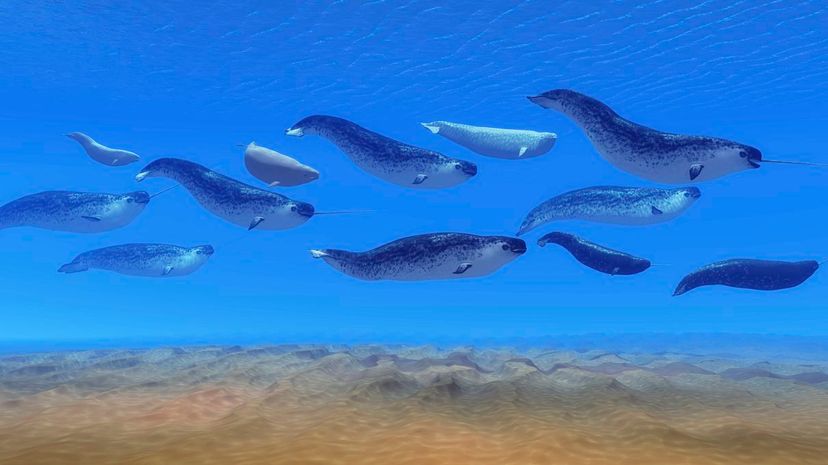
Measuring up to 15 feet long as adults, narwhals are found living in the Arctic Ocean. When they are young, they are sometimes confused for beluga whales. It's around the age of one that the horn begins to form on the male of the species.

When harp seals are young, they are solid white. As they grow and turn darker, they develop a pattern on their backs that resemble a harp. They might be cute, but they are known for being ferocious predators that will eat almost anything.
Advertisement

Weighing in at up to 1,800 pounds, the blue marlin is known for both its size and its speed. Capable of traveling from the Atlantic to the Indian oceans, blue marlins rarely stay in one place. Sport fishermen consider it one of the most exciting fish to catch.

The olive sea snake lives along the coast of Australia and has no fear of approaching adventurous divers. The olive sea snake's bite is highly venomous, but it rarely bites people. It tends to save the venom for its nocturnal fish hunts.
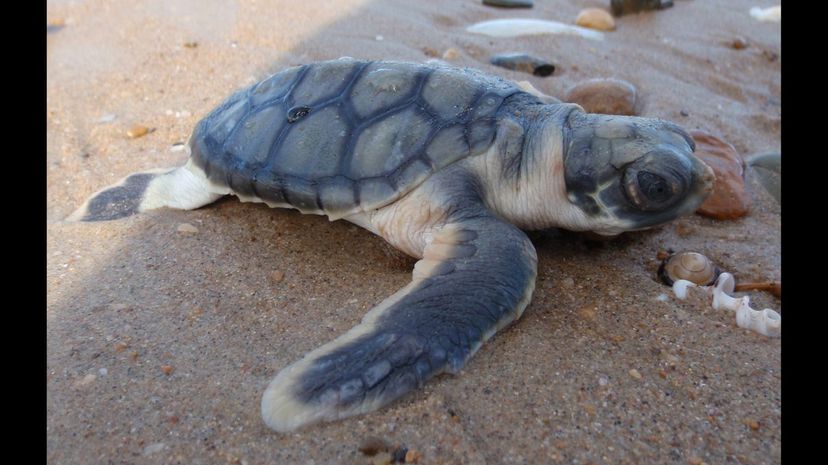
The flatback turtle's shell lacks the arch of the shells of other types of turtles, and that's how it gets its name. Only coming ashore to lay their eggs, flatbacks prefer to spend their lives in the water off the coast of New Guinea.
Advertisement

The king eider takes its name from the colorful feathers that make up its crown. Preferring to eat shellfish and crustaceans, the king eider prefers to live life in pairs on the shores of the Arctic. There, both the males and the females serve to incubate their eggs.
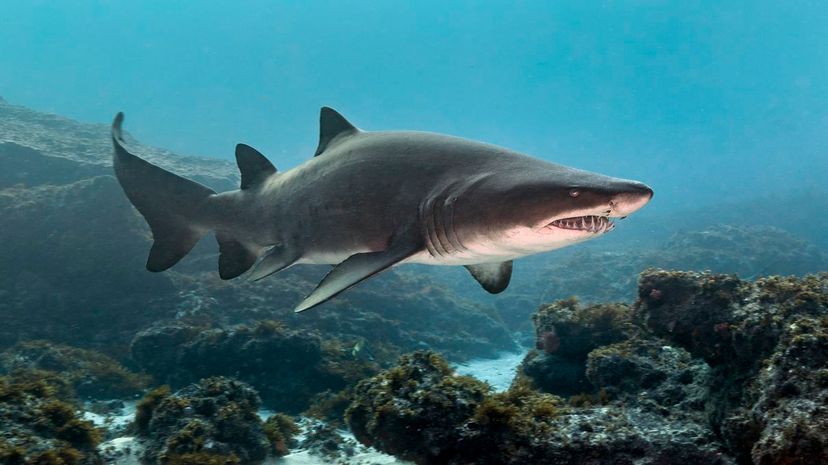
Growing up to 350 pounds and 11 feet in length, the sand tiger shark can be a quite intimidating sight for surfers. It is the only shark known to turn itself into a buoy by holding air within its stomach. Sadly, they are facing extinction.

Growing up to 14 feet in length and weighing up to a ton, the dugong is from the same family as the manatee. As the only marine herbivore, the dugong prefers to live in saltwater munching on seaweed and grass. Unlike other sea cows, it never enters freshwater.
Advertisement

Named after the stripes adorning their small bodies, the bluebanded goby is one of the only fish that never leaves the coral reefs found in the Pacific Ocean. Small but mighty, the goby hides in the crevices of the reef and nurtures it with its bodily functions.

Geoducks, or "gooey ducks" as it's pronounced, are the only type of shellfish with a smaller shell than their body. Though the shell usually measures around eight inches, the meaty part can grow over three feet long! It's a delight for culinary hunters living on the American Pacific coast.

The tasseled wobbegong is a member of the carpet shark family. It loves to stay on the bottom of the ocean posing as a rock until prey comes close enough for it to grab. At only four feet long, it is one of the sea's smallest sharks.
Advertisement

From a family of echinoderms, the sea cucumber is from the same family as jellyfish and sea slugs. Known as the vacuum of the sea, sea cucumbers like to clean the bottom of the ocean. They separate all the edible material from the inedible material and leave behind a trail of fresh sand.

Living in Antarctica, the emperor penguin likes to forage for edible marine life. They stand around three feet all, and both the male and the female are responsible for hatching their eggs. After the female lays the egg, the male takes over the duty of incubating it.

With their love for hunting and eating lobster on the ocean floor, the Atlantic cod has discriminating tastes. As the only fish to have distinctive anal fins, cod is one of the most loved fishes for dinner tables around the world.
Advertisement

With a wingspan of 11 feet, the spotted eagle ray is one of the largest rays found in the sea. Although they have live births, their young are nourished by yolk sacs rather than umbilical cords.

The acorn barnacle is the only kind of crustacean that cannot move once it reaches adulthood. They are able to live out of the water by tightly closing their shells to avoid drying out in the sun.
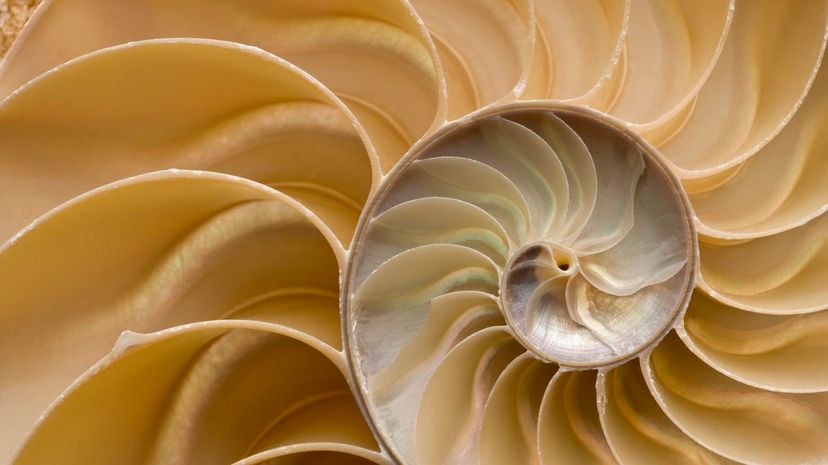
A master of buoyancy, the chambered nautilus can float by filling the extra chambers of its shell with gases. As the only kind of cephalopod to have a shell, the chambered nautilus is quite different from the other five types of the nautilus.
Advertisement
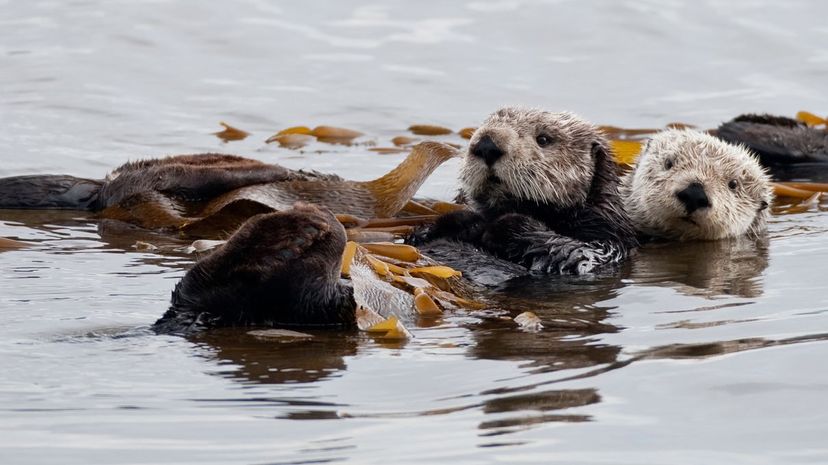
Unlike its weasel cousin the sea otter, the marine otter prefers to spend its life on land. Living on the west coast of South America, the marine otter likes to forage for food. It is even known to scavenge through human supplies for food!

Easily identified by its tusks, the walrus is the only one of its kind to survive years of evolution. Closely related to both eared seals and true seals, the walrus prefers to live its life near the beach eating worms, fish and mollusks.

Stonefish live near the ocean floor and among coral reefs, but you want to do your best to avoid them. Their venom is highly toxic and it can render a fatal result in less time than it takes to swim back to shore!
Advertisement

The stoplight loosejaw prefers to live up to 13,000 feet below the surface of the sea. Named after their hinged, skinless jaw, the animal hunts by opening its mouth wide and utilizing its needle-like teeth to snag prey.

Unlike the other 50 types of seagulls, the laughing gull sticks to the coast and never goes upstream into inland waterways. It takes its name from the cackling sound it makes when it calls to members of the flock.

The Australian leafy seadragon might live in the ocean, but they are terrible swimmers. They rely on their camouflaging skills to hide from predators. When it comes to eating, they like to use their big heads to angle their mouths so that they can suck in their prey.
Advertisement

Also known as Triton's Trumpet, the giant triton can grow up to 18 inches long! Although starfish do not have many predators, the giant triton thrives on hunting them. Their taste for starfish is helping to preserve the world's coral reefs.

Although the cushion star starts off life with five arms like a starfish, its arms grow together and inflate over time. When the cushion star wants to eat, it introverts its entire stomach!

The Indo-Pacific man-of-war, or the bluebottle, might be a beautiful color, but it uses its tentacles to sting prey into submission. Unlike its cousin the Portuguese man-of-war, the bluebottle is not known to have ever caused any human deaths.
Advertisement

Native to the Caribbean, the Atlantic trumpetfish likes to sit near coral reefs and seagrasses. Measuring over three feet in length, it takes its name from its triangular-shaped head that resembles the bell of a trumpet.

The largest oarfish on record is 35 feet long, but sailors tell tales of seeing them reach up to 50 feet! Also called the King of Herrings, this large-eyed species prefers to live at least 3,000 feet below the surface.
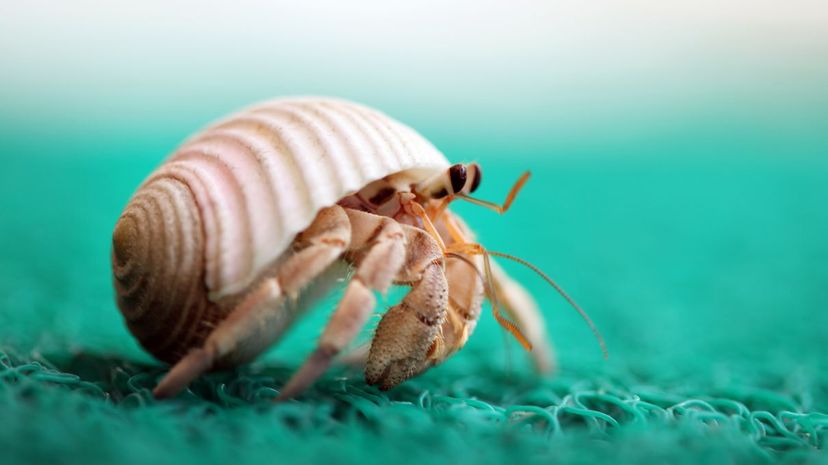
Living along the coasts of warm regions, hermit crabs are named for their shyness. Instead of fighting off predators, hermit crabs completely retract into the shells they've scavenged. Thanks to their elusiveness, they are still a thriving species.
Advertisement

Found on the bottom of the Indo-Pacific region, striped pyjama squid only reach about seven centimeters when they are fully grown. During the daytime, they like to use their signature stripes to camouflage themselves near broken shells while they sleep.

A member of the box jellyfish family, the sea wasp has over 50 stinging tentacles. Although they are formidable enough to kill a human with their poison, leatherback turtles consider them one of their favorite foods.

The hourglass dolphin is one of the most colorful of the species. Traveling in groups that average 14 members, they prefer to stay in colder water. In fact, they consider 32 degrees to be a little too warm!
Advertisement

The vaquita is the smallest of all types of porpoise. Growing only up to five feet and weighing in at 100 pounds, vaquita can be found swimming only near the Gulf of California in Mexico.

When the Southern giant petrel wants to take flight, it runs and flaps its wings until it has enough momentum to get off the ground. Preferring to live in the southern hemisphere, the giant petrel's wings can span up to seven feet across!

Reaching a weight of up to 2,200 pounds, the leatherback turtle is one of the only turtles to have a cartilage shell. Leatherbacks are also one of the only sea reptiles that can maintain their body temperature in cold water!
Advertisement

Found in the Caribbean, Florida and parts of the Gulf of Mexico, the Elkhorn coral was once abundant. Because of rising sea temperatures and pollution, it is nearly extinct.

The Mexican lookdown has one of the best camouflaging tricks in the ocean. When you look at it from above, it is so thin it is barely visible. When you look at it from a side angle, it appears as wide as an angelfish. It only needs to turn its body to leave predators unsure of approaching.

Identified by its brown body, the brown pelican likes to eat small fishes like sardines. Instead of diving for them, the brown pelican likes to swoop into the school and take large gulps of water containing the fish.
Advertisement